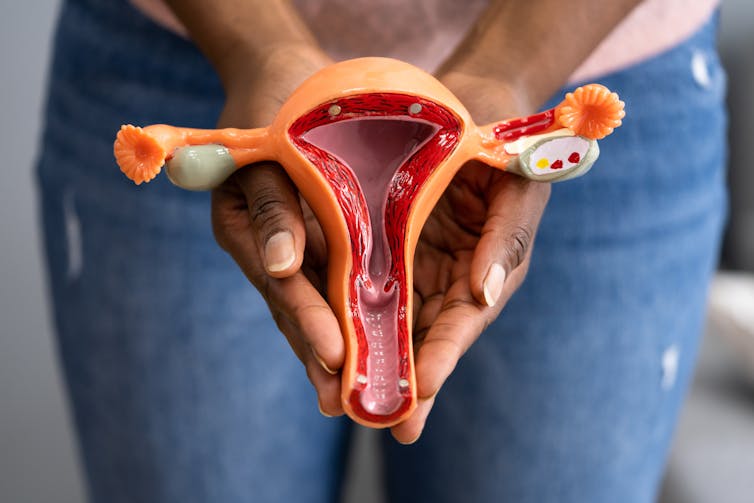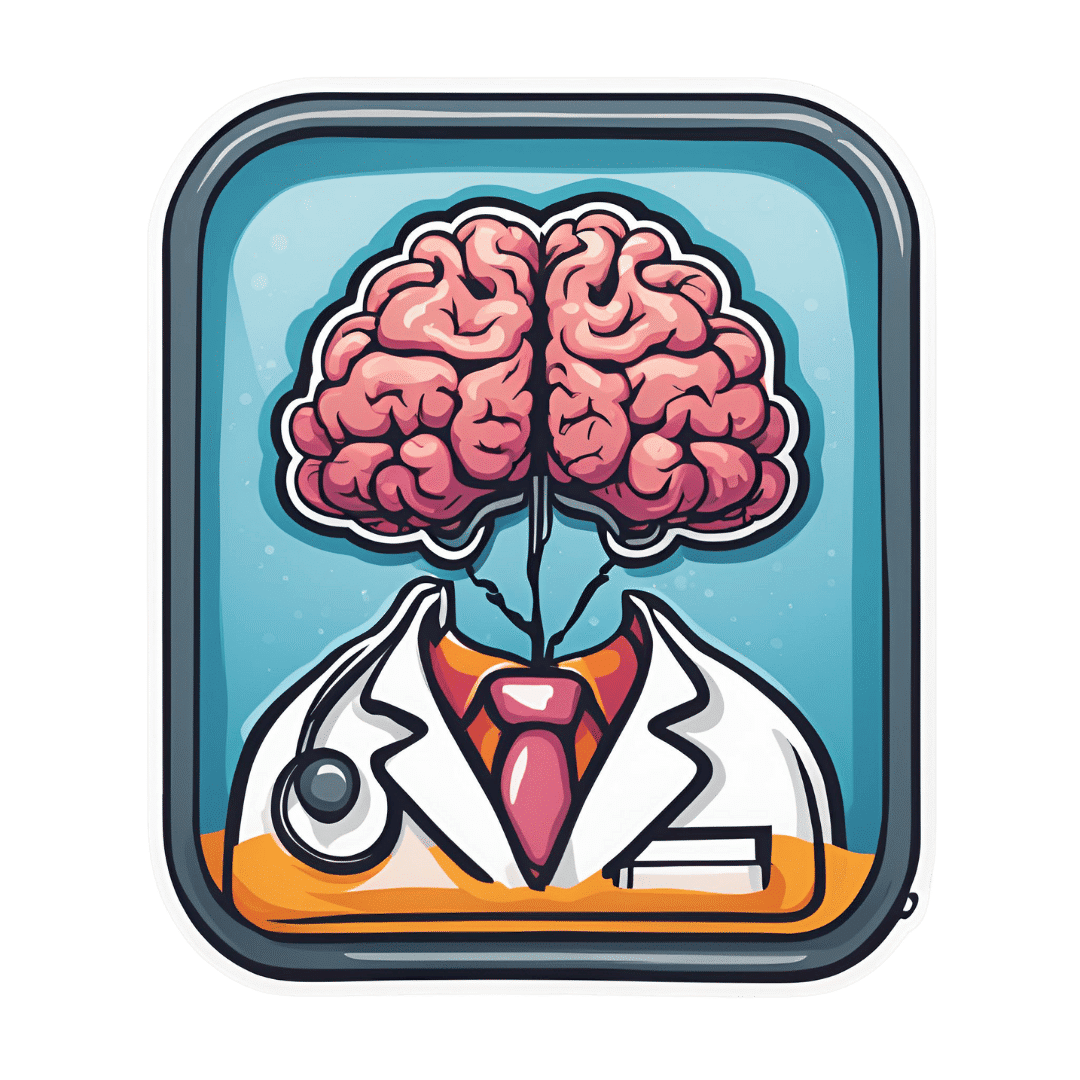
Are Fruit & Vegetable Extract Supplements Worth It?
10almonds is reader-supported. We may, at no cost to you, receive a portion of sales if you purchase a product through a link in this article.
At 10almonds we are always extolling the virtues of fruits and vegetables, but how much do those benefits still exist when we’re looking at a fruit and vegetable extract supplement?
We examined one aspect of this previously, here;
Mediterranean Diet… In A Pill?
This looked at getting the anti-inflammatory benefits of the Mediterranean diet, in supplement form, by providing extracts of 16 key plant extracts—which also provides an excellent shopping list, by the way, if you just want to skip the supplements and buy those plants; if nine top scientists (anti-aging specialists, neurobiologists, pharmacologists, and at least one professor of applied statistics) came to the conclusion that to get the absolute most bang-for-buck possible, those are the plants to get the phytochemicals from, then we’re not going to ignore that!
And yes, the short answer was “it does very significantly improve anti-inflammatory markers”, by the way.
But when it comes to benefits from polyphenols, anti-inflammatory powers are very much “low-hanging fruit”, so to speak. It’s the “fork found in kitchen” level of shocking revelation. It’s what polyphenols are best at (tied with antioxidant powers, which directly mediate their anti-inflammatory powers).
So, what about something more challenging, like brain benefits?
Underrated Brain Boosters
A European research team (Dr. Begoña Cerdá et al.) looked at the effects of polyphenol-rich nutraceuticals (plant extracts) on cognitive function and neuroprotection biomarkers.
It was a randomized, crossover, double-blind, sex-stratified, placebo-controlled clinical trial that had people take the supplement or a placebo for 16 weeks, have a 4-week washout phase (to minimize leftover effects contaminating the data) and then switching groups (still blinded to the placebo control) for 16 weeks.
They tested cognitive function and neuroprotection biomarkers in various ways before and after each of the testing phases (so, four testing sessions in total per person: before and after the supplement + before and after the placebo).
The results:
❝The results suggested that participants who consumed the polyphenol-rich nutraceutical demonstrated significant improvements in cognitive performance compared to the placebo group.
The Stroop Test scores indicated enhanced attention and inhibitory control, while RIST results suggested improvements in logical reasoning and memory. The Trail Making Test also revealed increased cognitive flexibility, highlighting the supplement’s potential to boost overall mental agility.
Furthermore, the ELISA results showed a notable increase in BDNF and CREB levels among participants who took the active supplement. BDNF is a protein that is essential for neuronal growth and survival, and its levels were significantly elevated, reinforcing its role in synaptic plasticity and long-term memory formation.
Additionally, CREB, a transcription factor involved in learning processes, also showed increased levels, supporting its function in cognitive enhancement.
Importantly, the correlation between improved test scores and higher biomarker levels suggested that polyphenols may directly influence brain function rather than merely offering general health benefits.
While the study focused on healthy adults, the findings also raised questions about whether similar interventions could benefit populations at risk for cognitive decline, including older adults and individuals with neurodegenerative conditions.❞
Key to abbreviations:
- RIST = Reynolds Intellectual Screening Test
- ELISA = Enzyme-Linked ImmunoSorbent Assays
- BDNF = Brain-Derived Neurotrophic Factor
- CREB = cAMP-Response Element Binding Protein
- cAMP = Cyclic Adenosine MonoPhosphate
Source: Daily fruit and vegetable extracts may boost brain power ← we quoted a pop-sci article for the above summary, for easier readability while still having the critical conclusions in one place
For those who do want to dive into the actual data and a lot more detail about the study methodology (which is well worth reading if you have the time, as it’s very good), here is the actual study:
If nothing else, be aware that the usual benchmark for statistical significance is p < 0.05, whereas the results in this study ranged from p < 0.01 to p < 0.001, in other words, ranging from 5x more significant than is required to be called “significant”, to 50x more significant than is required to be called “significant”.
In fewer words: impressively significant
In lay terms: the scientists are about as sure as scientists ever get about anything, that this supplement produces significant results
What was the supplement they tested?
Good news! It was…
- a commercially available supplement (JuicePlus), which is convenient, because it means we (and you, dear reader) can get it if we so choose
- not paid for by JuicePlus or anyone associated with them (indeed, the funding declaration on the study is “This research received no external funding”), so not subject to any conflict of interest that might introduce bias into the study
As for why they chose that one:
❝A unique aspect of the polyphenol-rich nutraceutical evaluated in this study lies in its composition, which integrates a blend of fruit, vegetable, and berry juice powders.
This product, Juice Plus+ Premium®, contains over 119 distinct polyphenolic compounds, including flavanols, anthocyanins, and flavones, as demonstrated in prior compositional analyses.
Compared to other polyphenol-based interventions, this nutraceutical stands out due to its comprehensive formulation, combining a wide range of bioactive compounds with complementary antioxidant and neuroprotective effects.
These characteristics ensure a more diverse interaction with neurobiological pathways, including those related to oxidative stress mitigation, synaptic plasticity, and cognitive function❞
Source: Ibid. (it’s in the introduction)
Want to try some?
We don’t sell it, but for your convenience, here’s where to get JuicePlus supplements Amazon 😎
Enjoy!
Don’t Forget…
Did you arrive here from our newsletter? Don’t forget to return to the email to continue learning!
Recommended
Learn to Age Gracefully
Join the 98k+ American women taking control of their health & aging with our 100% free (and fun!) daily emails:
-
Cashew & Chickpea Balti
10almonds is reader-supported. We may, at no cost to you, receive a portion of sales if you purchase a product through a link in this article.
When it comes to curries, the humble balti is perhaps the best when you don’t have all day to let something simmer. Filled with healthful spices, this one also comes complete with lots of fiber as well as healthy proteins and fats, with most of its calories coming from the nuts themselves, and the haricot paste base makes for a deliciously creamy curry without having to add anything unhealthy.
You will need
- 1 cup cashews, soaked in warm water for at least 5 minutes, and drained (if allergic, omit)
- 1 can chickpeas (keep the water)
- 1 can haricot beans (keep the water)
- 1 can crushed tomatoes
- 2 medium (or 3 small) red onions, sliced
- red or green chilis, quantity per your preference re heat, chopped
- ½ bulb garlic, crushed
- ½ oz fresh ginger, peeled and finely chopped
- 1 tbsp tomato paste
- 1 tbsp garam masala
- 1 tbsp ground coriander
- 1 tbsp black pepper, coarse ground
- 2 tsp turmeric
- 1 tsp mustard seeds (if allergic, omit)
- 1 tsp sweet cinnamon
- 1 tsp coriander seeds
- ½ tsp MSG or 1 tsp low-sodium salt
- Avocado oil, for frying (extra virgin olive-oil, or cold-pressed coconut oil, are fine alternatives)
- Garnish: handful fresh cilantro, chopped (or parsley, if you have the “cilantro tastes like soap” gene)
Method
(we suggest you read everything at least once before doing anything)
1) Heat a little oil in a large sauté pan (we’re going to need space to work; a large wok is traditional but a sauté pan is convenient), and add the garlic, ginger, mustard seeds, and coriander seeds, stirring for about 2 minutes, then add the onions and chilis, stirring for another 3 minutes. The onions and chilis won’t be fully cooked yet, but that’s fine, we just needed to get them started.
2) Add the crushed tomatoes, stirring them in, and when they get to temperature, turn the heat down to a simmer.
3) Add the chickpeas to the pan, but separately put the chickpea water into a high-speed blender.
4) Add the haricot beans, including the water they came in, to the high-speed blender, as well as the tomato paste and the remaining spices (including the MSG or salt), and blend on high until smooth. Add the curry paste (that’s what you’ve just made in the blender) to the pan, and stir in well.
5) Add the cashews, stirring in well. Taste, and adjust any spices if necessary for your liking. If the onions still aren’t fully cooked, let them simmer until they are, but it shouldn’t take long.
10almonds tip: if perchance you made it too spicy, you can add a little lime juice and the acidity will counteract the heat. Adding lemon juice, lime juice, or some kind of vinegar (depending on what works with the flavor profile of your recipe) is a good last resort to have up your sleeve for fixing a dish that got too spicy.
6) Add the garnish, and serve—we recommend serving it with our Tasty Versatile Rice, but any carb is fine.
Enjoy!
Want to learn more?
For those interested in some of the science of what we have going on today:
- Why You Should Diversify Your Nuts!
- Three Daily Servings of Beans?
- Cashew Nuts vs Coconut – Which is Healthier?
- What Matters Most For Your Heart?
- Our Top 5 Spices: How Much Is Enough For Benefits? ← we hit 5/5 again today!
Take care!
Share This Post
-
How weight bias in health care can harm patients with obesity: Research
10almonds is reader-supported. We may, at no cost to you, receive a portion of sales if you purchase a product through a link in this article.
Patients who weigh more than what medical authorities generally consider healthy often avoid seeing doctors for fear of being judged, insulted or misdiagnosed, decades of research find. Meanwhile, academic studies consistently show many health care professionals discriminate against heavier patients and that weight bias can drive people with obesity to gain weight.
Weight bias refers to negative attitudes, stereotypes and discrimination aimed at individuals with excess body fat. When scholars reviewed 41 studies about weight bias in health care, published from 1989 to 2021, they found it comes in many forms: contemptuous language, inappropriate gestures, expressing a preference for thinner patients, avoiding physical touch and eye contact, and attributing all of a person’s health issues to their weight.
“Weight bias has been reported in physicians, nurses, dietitians, physiotherapists, and psychologists, as well as nutritionists and exercise professionals, and it is as pervasive among medical professionals as it is within the general population,” write the authors of the research review, published in 2021 in the journal Obesity.
That’s a problem considering an estimated 4 out of 10 U.S. adults aged 20 years and older have obesity, a complex and often misunderstood illness that the American Medical Association voted in 2013 to recognize as a disease. By 2030, half of U.S. adults will have obesity, researchers project in a 2020 paper in the International Journal of Epidemiology.
Worldwide, the obesity rate among adults aged 18 and older was 13% in 2016, according to the World Health Organization. If current trends continue, the World Obesity Federation projects that, by 2035, 51% of the global population will be living with overweight or obesity.
The harms of weight bias
Weight stigma — the societal devaluation of people perceived to be carrying excess weight — drives weight bias. It’s so physically and emotionally damaging that a panel of 36 international experts issued a consensus statement in 2020 to raise awareness about and condemn it. Dozens of medical and academic organizations, including 15 scholarly journals, endorsed the document, published in Nature Medicine.
The release of a consensus statement is a significant event in research, considering it represents the collective position that experts in a particular field have taken on an issue, based on an analysis of all the available evidence.
Research to date indicates heavier individuals who experience weight bias and stigma often:
- Avoid doctors and other health care professionals, skipping routine screenings as well as needed treatments.
- Change doctors frequently.
- Are at a higher risk for depression, anxiety, mood disorders and other mental health problems.
- Avoid or put off exercise.
- Consume more food and calories.
- Gain weight.
- Have disrupted sleep.
The consensus statement notes that educating health care providers, journalists, policymakers and others about obesity is key to changing the narrative around the disease.
“Weight stigma is reinforced by misconceived ideas about body-weight regulation and lack of awareness of current scientific evidence,” write the experts, led by Francesco Rubino, the chair of metabolic and bariatric surgery at Kings College London.
“Despite scientific evidence to the contrary, the prevailing view in society is that obesity is a choice that can be reversed by voluntary decisions to eat less and exercise more. These assumptions mislead public health policies, confuse messages in popular media, undermine access to evidence-based treatments, and compromise advances in research.”
Weight bias and stigma appear to stimulate the secretion of the stress hormone cortisol and promote weight gain, researchers write in a 2016 paper published in Obesity.
A. Janet Tomiyama, a psychology professor at UCLA who directs the university’s Dieting, Stress, and Health research lab, describes weight stigma as “a ‘vicious cycle’ — a positive feedback loop wherein weight stigma begets weight gain.”
“This happens through increased eating behavior and increased cortisol secretion governed by behavioral, emotional, and physiological mechanisms, which are theorized to ultimately result in weight gain and difficulty of weight loss,” Tomiyama writes in her 2014 paper, “Weight Stigma is Stressful. A Review of Evidence for the Cyclic Obesity/Weight-Based Stigma Model.”
The consensus statement spotlights 13 recommendations for eliminating weight bias and stigma, some of which are specifically aimed at health care providers, the media, researchers or policymakers. One of the recommendations for the health care community: “[Health care providers] specialized in treating obesity should provide evidence of stigma-free practice skills. Professional bodies should encourage, facilitate, and develop methods to certify knowledge of stigma and its effects, along with stigma-free skills and practices.”
The one recommendation for the media: “We call on the media to produce fair, accurate, and non-stigmatizing portrayals of obesity. A commitment from the media is needed to shift the narrative around obesity.”
Why obesity is a complicated disease
It’s important to point out that having excess body fat does not, by itself, mean an individual is unhealthy, researchers explain in a 2017 article in The Conversation, which publishes research-based news articles and essays. But it is a major risk factor for cardiovascular disease, including stroke, as well as diabetes, some types of cancer, and musculoskeletal disorders such as osteoarthritis.
Doctors often look at patients’ body mass index — a number that represents their weight in relation to their height — to gauge the amount of fat on their bodies. A BMI of 18.5 to 24.9 is ideal, according to the U.S. Centers for Disease Control and Prevention. A BMI of 25.0 to 29.9, indicates excess body fat, or “overweight,” while a BMI of 30 and above indicates obesity.
In June, the American Medical Association announced a new policy clarifying how BMI can be used to diagnose obesity. Because it’s an imperfect measure for body fat, the organization suggests BMI be used in conjunction with other measures such as a patient’s waist circumference and skin fold thickness.
Two specialists who have been working for years to dispel myths and misconceptions about obesity are Fatima Cody Stanford, an obesity physician and associate professor at Harvard Medical School, and Rebecca Puhl, the deputy director of the Rudd Center for Food Policy and Obesity at the University of Connecticut.
Cody Stanford has called obesity “a brain disease” because the brain tells the body how much to eat and what to do with the food consumed. One pathway in the brain directs the body to eat less and store less fat, she explains in a February 2023 podcast produced by the American Medical Association.
“For people that signal really great down this pathway, they tend to be very lean, not struggle with their weight in the same way that people that have excess weight do,” she says during the podcast, adding that people with obesity receive signals from an alternate pathway that “tells us to eat more and store more.”
Academic studies demonstrate that a wide variety of factors can affect weight regulation, including sleep quality and duration, gut health, genetics, medication, access to healthy foods and even early life experiences.
For example, a 2020 paper in the journal JAMA Network Open suggests female infants born by cesarean delivery have a higher risk of obesity during adulthood than female infants born by vaginal delivery. The study of 33,226 U.S. women born between 1946 and 1964 found that a cesarean delivery is associated with an 11% higher risk of developing obesity and a 46% higher risk of developing type 2 diabetes.
Scholars have also found that traumatic childhood experiences such as abuse and neglect are linked to adult obesity, according to a research review published in 2020.
Income inequality seems to play a role as well. When researchers from the Johns Hopkins Bloomberg School of Public Health studied the link between income inequality and obesity for a sample of 36,665 U.S. adults, they discovered women with lower incomes are more likely to have obesity than women with higher incomes.
Their analysis indicates the opposite is true for men, whose odds of obesity rise with their income, the researchers write in a 2021 paper in the International Journal of Environmental Research and Public Health.
Weight bias among doctor trainees
While scholars have learned a lot about obesity and weight bias in recent decades, the information might not be reaching people training to become doctors. A study published in October finds that some resident physicians believe obesity to be the result of poor choices and weak willpower.
Researchers asked 3,267 resident physicians who graduated from a total of 49 U.S. medical schools a series of questions to gauge their knowledge of obesity and attitudes toward heavier patients. What they learned: Nearly 40% of resident physicians agreed with the statement, “Fat people tend to be fat pretty much through their own fault.” Almost half agreed with the statement, “Some people are fat because they have no willpower.”
The study also reveals that about one-third of participants said they “feel more irritated when treating an obese patient than a non-obese patient.”
“Notably, more than a quarter of residents expressed slight-to-strong agreement with the item ‘I dislike treating obese patients,’” the researchers write.
Another takeaway from the paper: Resident physicians specializing in orthopedic surgery, anesthesiology and urology expressed the highest levels of dislike of heavier patients. Of the 16 medical specialties represented, residents in family medicine, psychiatry and pediatrics reported the lowest levels of dislike.
Kimberly Gudzune, medical director of the American Board of Obesity Medicine, asserts that doctors and medical students need to be educated about obesity. The topic “is grossly neglected” in medical schools and medical training programs worldwide, research has found.
Many physicians don’t understand obesity, Gudzune explains in a July 2023 interview on the internal medicine podcast “The Curbsiders.”
“I think back to when I was a medical student, when I was a resident, I really didn’t learn much about obesity and how to treat it, yet it’s a problem that affects the majority of our patients,” she tells podcast listeners. “I think there’s a lot of evidence out there showing that primary care physicians don’t really know where to start.”
In 2011, the American Board of Obesity Medicine established a program through which doctors could become certified in obesity medicine. Since then, a total of 6,729 U.S. doctors have earned certification, the vast majority of whom specialize in family and internal medicine.
What health care providers think
The experts who created the consensus statement on weight bias and stigma noted health care providers’ shortcomings in the document. They write that the common themes they discovered in the research include “contemptuous, patronizing, and disrespectful treatment” of patients, a lack of training, poor communication and assumptions about weight gain.
Puhl, the deputy director of the Rudd Center at the University of Connecticut, is a pioneer in weight bias research and one of the experts who wrote the consensus statement. During an episode of “The Leading Voices in Food,” a podcast created by Duke University’s World Food Policy Center, she shares details about what she has learned over the years.
“[Health care providers’] views that patients with obesity are lazy or lacking control, are to blame for their weight or noncompliant with treatment,” she says during the interview. “We know, for example, that some physicians spend less time in their appointments with patients [who] have a larger body size. They give them less education about health. They’re more reluctant to perform certain screenings. They talk about treating patients with obesity as being a greater waste of their time than providing care to thinner patients. And we know that patients seem to be aware of these biases from providers and that can really contribute to patients avoiding health care because they just don’t want to repeat those negative experiences of bias.”
To set the record straight, the experts who wrote the the consensus statement listed the following five common assumptions as being “at odds with a definitive body of biological and clinical evidence.”
1. Body weight = calories in – calories out.
This equation oversimplifies the relationship between body weight and energy consumed and used, the experts write. “Both variables of the equation depend on factors additional to just eating and exercising. For instance, energy intake depends on the amount of food consumed, but also on the amount of food-derived energy absorbed through the gastrointestinal tract, which in turn is influenced by multiple factors, such as digestive enzymes, bile acids, microbiota, gut hormones, and neural signals, none of which are under voluntary control.”
2. Obesity is primarily caused by voluntary overeating and a sedentary lifestyle.
According to the experts, overeating and forgoing exercise might be symptoms of obesity rather than the root causes. There are many possible causes and contributors “including geneticand epigenetic factors, foodborne factors, sleep deprivation and circadian dysrhythmia, psychological stress, endocrine disruptors, medications, and intrauterine and intergenerational effects. These factors do not require overeating or physical inactivity to explain excess weight.” they write.
3. Obesity is a lifestyle choice.
“People with obesity typically recognize obesity as a serious health problem, rather than a conscious choice,” the experts write. “Given the negative effects of obesity on quality of life, the well-known risks of serious complications and reduced life expectancy associated with it, it is a misconception to define obesity as a choice.”
4. Obesity is a condition, not a disease.
The criteria generally used to determine disease status “are clearly fulfilled in many individuals with obesity as commonly defined, albeit not all,” the experts explain. “These criteria include specific signs or symptoms (such as increased adiposity), reduced quality of life, and/or increased risk of further illness, complications, and deviation from normal physiology — or well-characterized pathophysiology (for example, inflammation, insulin resistance, and alterations of hormonal signals regulating satiety and appetite).”
5. Severe obesity is usually reversible by voluntarily eating less and exercising more.
“A large body of clinical evidence has shown that voluntary attempts to eat less and exercise more render only modest effects on body weight in most individuals with severe obesity,” the experts write. “When fat mass decreases, the body responds with reduced resting energy expenditure and changes in signals that increase hunger and reduce satiety (for example, leptin, ghrelin). These compensatory metabolic and biologic adaptations promote weight regain and persist for as long as persons are in the reduced-energy state, even if they gain some weight back.”
Health care facility improvements
The expert panel also determined that many health care facilities aren’t equipped to treat people with obesity. Examination gowns, blood pressure cuffs, chairs and examination tables often are too small, patients have reported.
When researchers from the University of Minnesota, Minneapolis Veterans Affairs Medical Center and Mayo Clinic studied the quality of care that patients with obesity receive, they learned that a clinic’s physical environment can have a big effect on a patient’s experience.
They write in a 2015 study published in Obesity Reviews: “Waiting room chairs with armrests can be uncomfortable or too small. Equipment such as scales, blood pressure cuffs, examination gowns and pelvic examination instruments are often designed for use with smaller patients. When larger alternatives are not available, or are stored in a place that suggests infrequent use, it can signal to patients that their size is unusual and that they do not belong. These experiences, which are not delivered with malicious intent, can be humiliating.”
When medical equipment is the wrong size, it may not work correctly. For instance, chances are high that a blood pressure reading will be inaccurate if a health care professional uses a blood pressure cuff that’s too small on a patient with obesity, a 2022 paper finds.
To create a comfortable environment for patients with high body weights, the Rudd Center for Food Policy and Obesity recommends that health care facilities provide, among other things, extra-large exam gowns, chairs that can support more than 300 pounds and do not have arms, and wide exam tables that are bolted to the floor so they don’t move.
The consensus statement also recommends improvements to health care facilities.
“Given the prevalence of obesity and obesity-related diseases,” the 36 international experts write, “appropriate infrastructure for the care and management of people with obesity, including severe obesity, must be standard requirement for accreditation of medical facilities and hospitals.”
Source list:
Weight Bias Among Health Care Professionals: A Systematic Review and Meta-Analysis
Blake J. Lawrence; et al. Obesity, November 2021.Joint International Consensus Statement for Ending Stigma of Obesity
Francesco Rubino, et al. Nature Medicine, March 2020.Perceived Weight Discrimination and Chronic Biochemical Stress: A Population-Based Study Using Cortisol in Scalp Hair
Sarah E. Jackson, Clemens Kirschbaum and Andrew Steptoe. Obesity, December 2016.Weight Stigma is Stressful. A Review of Evidence for the Cyclic Obesity/Weight-Based Stigma Model
A. Janet Tomiyama. Appetite, November 2014.Association of Birth by Cesarean Delivery with Obesity and Type 2 Diabetes Among Adult Women
Jorge E. Chavarro. JAMA Network Open, April 2020.Adverse Childhood Experiences and Adult Obesity: A Systematic Review of Plausible Mechanisms and Meta-Analysis of Cross-Sectional Studies
David A. Wiss and Timothy D. Brewerton. Physiology & Behavior, September 2020.Income Inequality and Obesity among U.S. Adults 1999–2016: Does Sex Matter?
Hossein Zare, Danielle D. Gaskin and Roland J. Thorpe Jr. International Journal of Environmental Research and Public Health, July 2021.Comparisons of Explicit Weight Bias Across Common Clinical Specialties of U.S. Resident Physicians
Samantha R. Philip, Sherecce A. Fields, Michelle Van Ryn and Sean M. Phelan. Journal of General Internal Medicine, October 2023.Impact of Weight Bias and Stigma on Quality of Care and Outcomes for Patients with Obesity
S.M. Phelan; et al. Obesity Reviews, April 2015.One Size Does Not Fit All: Impact of Using A Regular Cuff For All Blood Pressure Measurements
Tammy. M. Brady; et al. Circulation, April 2022.This article first appeared on The Journalist’s Resource and is republished here under a Creative Commons license.
Share This Post
-
What’s the difference between period pain and endometriosis pain?
10almonds is reader-supported. We may, at no cost to you, receive a portion of sales if you purchase a product through a link in this article.
Menstruation, or a period, is the bleeding that occurs about monthly in healthy people born with a uterus, from puberty to menopause. This happens when the endometrium, the tissue that lines the inside of the uterus, is shed.
Endometriosis is a condition that occurs when endometrium-like tissue is found outside the uterus, usually within the pelvic cavity. It is often considered a major cause of pelvic pain.
Pelvic pain significantly impacts quality of life. But how can you tell the difference between period pain and endometriosis?
Polina Zimmerman/Pexels Periods and period pain
Periods involve shedding the 4-6 millimetre-thick endometrial lining from the inside of the uterus.
As the lining detaches from the wall of the uterus, the blood vessels which previously supplied the lining bleed. The uterine muscles contract, expelling the blood and crumbled endometrium.
The crumbled endometrium and blood mostly pass through the cervix and vagina. But almost everyone back-bleeds via their fallopian tubes into their pelvic cavity. This is known as “retrograde menstruation”.
Most of the lining is shed through the vagina. Andrey_Popov/Shutterstock The process of menstrual shedding is caused by inflammatory substances, which also cause nausea, vomiting, diarrhoea, headaches, aches, pains, dizziness, feeling faint, as well as stimulating pain receptors.
These inflammatory substances are responsible for the pain and symptoms in the week before a period and the first few days.
For women with heavy periods, their worst days of pain are usually the heaviest days of their period, coinciding with more cramps to expel clots and more retrograde bleeding.
Many women also have pain when they are releasing an egg from their ovary at the time of ovulation. Ovulation or mid-cycle pain can be worse in those who bleed more, as those women are more likely to bleed into the ovulation follicle.
Around 90% of adolescents experience period pain. Among these adolescents, 20% will experience such severe period pain they need time off from school and miss activities. These symptoms are too often normalised, without validation or acknowledgement.
What about endometriosis?
Many symptoms have been attributed to endometriosis, including painful periods, pain with sex, bladder and bowel-related pain, low back pain and thigh pain.
Other pain-related conditions such migraines and chronic fatigue have also been linked to endometriosis. But these other pain-related symptoms occur equally often in people with pelvic pain who don’t have endometriosis.
One in five adolescents who menstrate experience severe symptoms. CGN089/Shutterstock Repeated, significant period and ovulation pain can eventually lead some people to develop persistent or chronic pelvic pain, which lasts longer than six months. This appears to occur through a process known as central sensitisation, where the brain becomes more sensitive to pain and other sensory stimuli.
Central sensitisation can occur in people with persistent pain, independent of the presence or absence of endometriosis.
Eventually, many people with period and/or persistent pelvic pain will have an operation called a laparoscopy, which allows surgeons to examine organs in the pelvis and abdomen, and diagnose and treat endometriosis.
Yet only 50% of those with identical pain symptoms who undergo a laparoscopy will end up having endometriosis.
Endometriosis is also found in pain-free women. So we cannot predict who does and doesn’t have endometriosis from symptoms alone.
How is this pain managed?
Endometriosis surgery usually involves removing lesions and adhesions. But at least 30% of people return to pre-surgery pain levels within six months or have more pain than before.
After surgery, emergency department presentations for pain are unchanged and 50% have repeat surgery within a few years.
Suppressing periods using hormonal therapies (such as continuous oral contraceptive pills or progesterone-only approaches) can suppress endometriosis and reduce or eliminate pain, independent of the presence or absence of endometriosis.
Not every type or dose of hormonal medications suits everyone, so medications need to be individualised.
The current gold-standard approach to manage persistent pelvic pain involves a multidisciplinary team approach, with the aim of achieving sustained remission and improving quality of life. This may include:
- physiotherapy for pelvic floor and other musculoskeletal problems
- management of bladder and bowel symptoms
- support for self-managing pain
- lifestyle changes including diet and exercise
- psychological or group therapy, as our moods, stress levels and childhood events can affect how we feel and experience pain.
Whether you have period pain, chronic pelvic pain or pain you think is associated with endometriosis, if you feel pain, it’s real. If it’s disrupting your life, you deserve to be taken seriously and treated as the whole person you are.
Sonia R. Grover, Senior Research Fellow, Murdoch Children’s Research Institute; Clinical Professor of Gynaecology, The University of Melbourne
This article is republished from The Conversation under a Creative Commons license. Read the original article.
Share This Post
Related Posts
-
The Fruit That Can Specifically Reduce Belly Fat
10almonds is reader-supported. We may, at no cost to you, receive a portion of sales if you purchase a product through a link in this article.
Gambooge: Game-Changer Or Gamble?
The gambooge, also called the gummi-gutta, whence its botanical name Garcinia gummi-gutta (formerly Gardinia cambogia), is also known as the Malabar tamarind, and it even got an English name, the brindle berry.
It’s a fruit that looks like a small pale yellow pumpkin in shape, but it grows on trees and has a taste so sour, that it’s usually used only in cooking, and not eaten raw
which makes this writer really want to try it raw now.Its active phytochemical compound hydroxycitric acid (HCA) rose to popularity as a supplement in the US based on a paid recommendation from Dr. Oz, and then became a controversy as supplements associated with it, were in turn associated with hepatotoxicity (more on this in the “Is it safe?” section below).
What do people use it for?
Simply put: it’s a weight loss supplement.
Less simply put: least interestingly, it’s a mild appetite suppressant:
Safety and mechanism of appetite suppression by a novel hydroxycitric acid extract (HCA-SX) ← this talks more about the biochemistry, but isn’t a human study. Human studies have been small and with mixed results. It seems likely that (as in the rat studies discussed above) the mechanism of action is largely about increasing serotonin, which itself is a well-established appetite suppressant. Therefore, the results will depend somewhat on a person’s brain’s serotonergic system.
We’ll revisit that later, but first let’s look at…
Even less simply put: its other mechanism of action is much more interesting; it actually blocks the production of fat (especially: visceral fat) in the body, by inhibiting citrate lyase, which enzyme plays a significant role in fat production:
Effects of (−)-hydroxycitrate on net fat synthesis as de novo lipogenesis
More illustratively, here’s another study, which found:
❝G cambogia reduced abdominal fat accumulation in subjects, regardless of sex, who had the visceral fat accumulation type of obesity. No rebound effect was observed.
It is therefore expected that G cambogia may be useful for the prevention and reduction of accumulation of visceral fat. ❞
~ Dr. Norihiro Shigematsu et al.
As to why this is particularly important, and far more important than mere fat loss in general, see our previous main feature:
Visceral Belly Fat (And How To Lose It)
Is it safe?
It has shown a good safety profile up to large doses (2.8g/day):
Evaluation of the safety and efficacy of hydroxycitric acid or Garcinia cambogia extracts in humans
There have been some fears about hepatotoxicity, but they appear to be unfounded, and based on products that did not, in fact, contain HCA (and were merely sold by a company that used a similar name in their marketing):
No evidence demonstrating hepatotoxicity associated with hydroxycitric acid
However, as it has a serotoninergic effect, it could cause problems for anyone at risk of serotonin syndrome, which means caution is advisable if you are taking SSRIs (which reduce the rate at which the brain can scrub serotonin, with the usually laudable goal of having more serotonin in the brain—but it is possible to have too much of a good thing, and serotonin syndrome isn’t fun).
As ever, do check with your pharmacist and/or doctor, to be sure, since they can advise with regard to your specific situation and any medications you may be taking.
Want to try some?
We don’t sell it, but here for your convenience is an example product on Amazon
Enjoy!
Don’t Forget…
Did you arrive here from our newsletter? Don’t forget to return to the email to continue learning!
Learn to Age Gracefully
Join the 98k+ American women taking control of their health & aging with our 100% free (and fun!) daily emails:
-
Genital herpes is on the rise. Here’s what to know about this common infection
10almonds is reader-supported. We may, at no cost to you, receive a portion of sales if you purchase a product through a link in this article.
The World Health Organization (WHO) recently released new estimates suggesting around 846 million people aged between 15 and 49 live with a genital herpes infection.
That’s equivalent to one in every five people from that age group.
At least one person each second (42 million people annually) contracts a new genital herpes infection.
So what is genital herpes, and are cases on the rise? Here’s what to know about this common infection.
Peakstock/Shutterstock First, what causes genital herpes?
Genital herpes is a sexually transmitted infection (STI) caused by the herpes simplex virus, which also causes cold sores.
There are two types of herpes simplex virus, HSV-1 and HSV-2 (and it’s possible to be infected by both at the same time).
HSV-1 most commonly spreads through oral contact such as kissing or sharing infected objects such as lip balm, cups or utensils, and presents as cold sores (or oral herpes) around the mouth. But it can also be sexually transmitted to cause a genital herpes infection.
An estimated 3.8 billion people under the age of 50 (64%) globally have HSV-1.
HSV-2 is less prevalent, but almost always causes a genital herpes infection. Some 520 million people aged 15–49 (13%) worldwide are believed to have HSV-2.
The initial episode of genital herpes can be quite painful, with blisters, ulcers and peeling skin around the genitals over 7–10 days.
Not all people have severe (or any) initial symptoms. This means a person might not know they have been infected with a herpes virus.
Herpes is a lifelong infection, which means once you contract the virus, you have it forever. After an initial episode, subsequent episodes can occur, but are usually less painful or even symptom free.
Both oral and genital herpes are particularly easy to spread when you have active lesions (cold sores or genital ulcers). But even with no symptoms, herpes can still be spread to a partner.
And although relatively rare, oral herpes can be transmitted to the genital area, and genital herpes can be transmitted to the mouth through oral sex.
If an expectant mother exhibits a genital herpes infection close to childbirth, there are risks to the baby. A herpes infection can be very serious in a baby, and the younger the infant, the more vulnerable they are. This is also one reason why you should avoid kissing a baby on the mouth.
Changing trends
WHO’s recent figures brought together data from around the world to estimate the prevalence of genital herpes in 2020, compared with previous estimates in 2012 and 2016.
This data shows no significant difference in the prevalence of genital herpes caused by HSV-2 since 2016, but does highlight increases in genital herpes infections caused by HSV-1.
The estimated number of genital HSV-1 infections globally was nearly twice as high in 2020 compared with 2016 (376 million compared with 192 million).
A 2022 study looking at Australia, New Zealand and Canada found more than 60% of genital herpes infections are still caused by HSV-2. But this is declining by about 2% each year while new genital infections that result from HSV-1 are rising.
Genital herpes can be quite painful, presenting as sores and lesions that in severe cases, may take up to a month to fully heal. Christian Moro There’s no simple fix, but safe sex is important
Genital herpes causes a substantial disease burden and economic cost to health-care services.
With such a large proportion of the world’s population infected with HSV-1, evidence this virus is increasingly causing genital herpes is concerning.
There’s no cure for genital herpes, but some medications, such as antivirals, can help reduce the amount of virus present in the system. While this won’t kill it completely, it helps to prevent symptomatic genital herpes recurrences, improve quality of life, and minimise the risk of transmission.
To prevent the spread of genital herpes and other STIs, practise safe sex, particularly if you’re not sure of your partner’s sexual health. You need to use a barrier method such as condoms to protect against STIs (a contraceptive such as the pill won’t work). This includes during oral sex.
As herpes is now so common, testing is not usually included as part of a regular sexual health check-up, except for in specific circumstances such as during pregnancy or severe episodes.
So it’s wise not to let your guard down, even if your partner insists they have received the all-clear from a recent check-up.
If there are herpes lesions present around the genitals, avoid sex entirely. Even condoms are not fully effective at these times, as exposed areas can still transmit the infection.
Practising safe sex can help prevent the spread of herpes. cottonbro studio/Pexels Immune health
If you are infected with HSV-1 or HSV-2 it’s more likely symptoms will appear when you’re stressed, tired or overwhelmed. During these times, our immune system may not be as functional, and dormant viruses such as herpes can start to develop quickly in our bodies.
To reduce the risk of recurrent herpes infections, try to eat healthily, get at least seven hours of sleep each night if possible, and look out for when your body may be telling you to take a step back and relax. This self-care can go a long way towards keeping latent viruses at bay.
While the prevalence has increased significantly in recent years, we have not lost the war on genital herpes just yet. Safe sexual practices, education and awareness can help reduce its spread, and the stigma around it.
If you have personal concerns, you should discuss them with a medical professional.
Christian Moro, Associate Professor of Science & Medicine, Bond University and Charlotte Phelps, Senior Teaching Fellow in Medicine, Bond University
This article is republished from The Conversation under a Creative Commons license. Read the original article.
Don’t Forget…
Did you arrive here from our newsletter? Don’t forget to return to the email to continue learning!
Learn to Age Gracefully
Join the 98k+ American women taking control of their health & aging with our 100% free (and fun!) daily emails:
-
All In Your Head (Which Is Where It’s Supposed To Be)
10almonds is reader-supported. We may, at no cost to you, receive a portion of sales if you purchase a product through a link in this article.
Today’s news is all about things above the neck, and mostly in the brain. From beating depression to beating cognitive decline, from mindfulness against pain to dentistry nightmares to avoid:
Transcranial ultrasound stimulation
Transcranial magnetic stimulation is one of those treatments that sounds like it’s out of a 1950s sci-fi novel, and yet, it actually works (it’s very well-evidenced against treatment-resistant depression, amongst other things). However, a weakness of it is that it’s difficult to target precisely, making modulation of most neurological disorders impossible. Using ultrasound instead of a magnetic field allows for much more finesse, with very promising initial results across a range of neurological disorders
Read in full: Transcranial ultrasound stimulation: a new frontier in non-invasive brain therapy
Related: Antidepressants: Personalization Is Key!
This may cause more pain and damage, but at least it’s more expensive too…
While socialized healthcare systems sometimes run into the problem of not wanting to spend money where it actually is needed, private healthcare systems have the opposite problem: there’s a profit incentive to upsell to more expensive treatments. Here’s how that’s played out in dentistry:
Read in full: Dentists are pulling healthy and treatable teeth to profit from implants, experts warn
Related: Tooth Remineralization: How To Heal Your Teeth Naturally
Mindfulness vs placebo, for pain
It can be difficult with some “alternative therapies” to test against placebo, for example “and control group B will merely believe that they are being pierced with needles”, etc. However, in this case, mindfulness meditation was tested as an analgesic vs sham meditation (just deep breathing) and also vs placebo analgesic cream, vs distraction (listening to an audiobook). Mindfulness meditation beat all of the other things:
Read in full: Mindfulness meditation outperforms placebo in reducing pain
Related: No-Frills, Evidence-Based Mindfulness
Getting personal with AI doctors
One of the common reasons that people reject AI doctors is the “lack of a human touch”. However, human and AI doctors may be meeting in the middle nowadays, as humans are pressed to see more patients in less time, and AI is trained to be more personal—not just a friendlier affect, but also, such things as remembering the patient’s previous encounters (again, something with which overworked human doctors sometimes struggle). This makes a big difference to patient satisfaction:
Read in full: Personalization key to patient satisfaction with AI doctors
Related: AI: The Doctor That Never Tires?
Combination brain therapy against cognitive decline
This study found that out of various combinations trialled, the best intervention against cognitive decline was a combination of 1) cognitive remediation (therapeutic interventions designed to improve cognitive functioning, like puzzles and logic problems), and 2) transcranial direct current stimulation (tDCS), a form of non-invasive direct brain stimulation, similar to the magnetic or ultrasound methods we mentioned earlier today. Here’s how it worked:
Read in full: Study reveals effective combination therapy to slow cognitive decline in older adults
Related: How To Reduce Your Alzheimer’s Risk
Take care!
Don’t Forget…
Did you arrive here from our newsletter? Don’t forget to return to the email to continue learning!
Learn to Age Gracefully
Join the 98k+ American women taking control of their health & aging with our 100% free (and fun!) daily emails:














